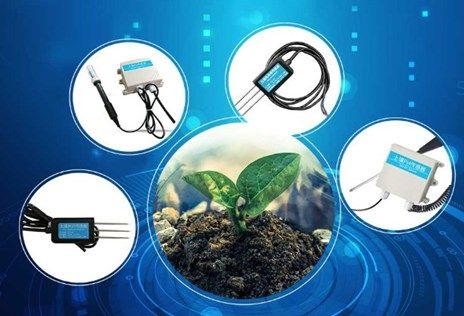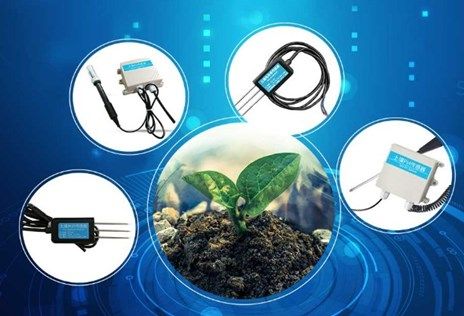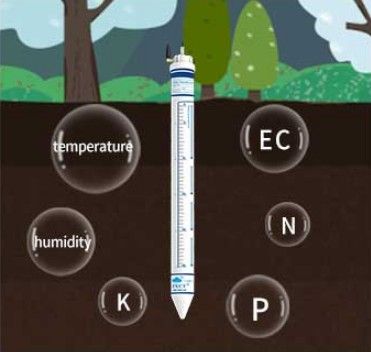
FAQs about Soil Moisture Sensor
There are many ways to monitor soil moisture, the most commonly used method is through the soil moisture sensor measurement.

There are many ways to monitor soil moisture, the most commonly used method is through the soil moisture sensor measurement.
Soil moisture is the base condition for plant growth and development. Soil water content can directly affect crop growth quality and growth rate. In agricultural cultivation, the inorganic elements in the soil cannot be obtained directly by the crops themselves. Water in the soil acts as a solvent to dissolve these inorganic elements. Crops absorb soil water and nutrients through their roots to promote growth. Therefore, precipitation or irrigation must be converted into soil. Water can be absorbed by plants. In the process of crop growth and completion of development, the requirements of soil temperature, water content and salinity are different due to different varieties. There are many ways to monitor soil moisture, the most commonly used method is through the soil moisture sensor measurement.
Most people are familiar with soil moisture sensors, but there are many problems when choosing and using soil moisture sensors. Here are some frequently asked questions about soil moisture sensors.

The most commonly used soil moisture sensors on the market are the tdr soil moisture sensor and fdr soil moisture sensor.
FDR soil moisture sensor working principle
FDR refers to frequency domain reflection, which uses the principle of electromagnetic pulse. The apparent dielectric constant (ε) of the soil is measured according to the frequency of electromagnetic waves propagating in the medium to obtain the soil volumetric water content (θv). The measurement principle, system installation, measurement method and application of FDR system in continuous dynamic monitoring of soil moisture are introduced, and the actual measurement results are corrected, which can be used as a reference for FDR correction.

TDR soil moisture sensor working principle
TDR refers to time domain reflectance, which is a common principle for quickly detecting soil moisture. The principle is that the waveform on a mismatched transmission line will reflect. The waveform at any point on the transmission line is the superposition of the original waveform and the reflected waveform. The response time of TDR principle equipment is about 10-20 seconds, which is suitable for mobile measurement and fixed-point monitoring.
The probe is powered by a 4.5~30V DC power supply, and the output signal is a standard RS485modbus protocol.
The probe is powered by a 10~30V DC power supply, and the output signal can be 4-20ma, 0-5v, 0-10v.
The probe is powered by a DC 3.6V lithium battery and can output wirelessly, such as lora output.
The most reliable way to calibrate any type of sensor is to compare it with a known good-performance instrument under actual humidity conditions. The relative humidity in the range of 50 to 90% is usually found between noon and midnight in summer, and another Methods, such as continuous water spraying in a civil bathroom, can be used in the high-mix range, and the relative humidity below 50% can sometimes be obtained in a central heating chamber, or it can be artificially manufactured indoors with an electric heater. The relative humidity in the room is usually 60% at 20°C. When the temperature is increased to 32°C, the relative humidity can be reduced to 30%. The best instruments for humidity reference are psychrometers and dew point meters. The dew point meter has an accurate calibrated thermometer, which is as accurate as the air temperature measurement, so it will give a reliable humidity value.

Our tdr soil moisture sensor has two reading methods: 1. soil moisture sensor data logger, which is convenient for customers to carry and use. We have developed a soil moisture data logger (RS-TRREC-N01-1), which connects the soil moisture sensor to the soil data logger can display soil moisture in real-time. It also has data storage and data export functions. 2. Free cloud platform, for users who have a fixed measurement location and many measurement points can view the data by uploading the data to the free cloud platform provided by our company, which can be viewed in real-time on both computers and mobile phones.
At present, there are many soil moisture measurement methods on the market, and there are different soil moisture sensors. For example: Time Domain Reflectometry (TDR), Plaster Method, Infrared Remote Sensing Method, Frequency Domain Reflectance Method/Frequency Domain Method (FDR/FD Method), Titration Method, Capacitance Method, Resistance Method, Microwave Method, Neutron Method, Karl Fischer Method, Y-ray method and nuclear magnetic resonance method. The fdr soil moisture sensor and tdr soil moisture sensor are the two most widely used soil sensors with the best accuracy.